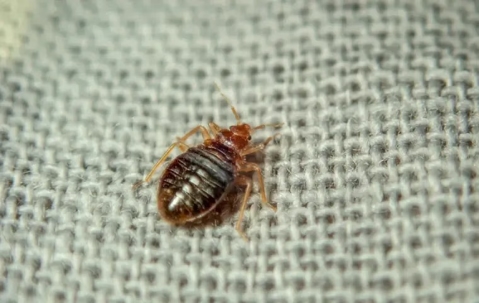Fact or Fiction: Can Bed Bugs Bite Through Clothes
If you've ever woken up with itchy red spots and wondered whether bed bugs are biting you through your pajamas, you're not alone. Many people assume that wearing long sleeves and pants to bed will protect them from bed bug bites—but is that true?
Let's break down whether bed bugs can bite through clothes, how they operate, and what you can do to keep them away.
Key Takeaways
- Bed bugs cannot bite through clothes, but they crawl under loose fabric to find exposed skin for feeding.
- They feed on blood, find humans by body heat and carbon dioxide, and leave bites in clusters or lines.
- Signs of bed bugs include blood stains, black droppings, shed skins, musty smells, tiny eggs, and small bugs.
- To protect yourself, check secondhand furniture, use mattress covers, vacuum often, wash in high heat, and call experts.
Do Bed Bugs Bite Through Clothes?
The short answer: No, bed bugs cannot bite through fabric. Their mouthparts aren't strong enough to pierce clothing, especially thicker materials.
However, that doesn’t mean you're completely safe just because you're covered up.
Instead of biting through the fabric, they look for exposed skin to feed on. If you're wearing loose clothing, they may crawl underneath to find a good feeding spot.
This is why people often wake up with bites on their arms, neck, and legs—areas that may not be fully covered or are easier for bed bugs to access.
Why Do Bed Bugs Bite?
Bed bugs are blood feeders, meaning they survive by feeding on human or animal blood. They are attracted to body heat and the carbon dioxide we exhale while sleeping.
Once they find a host, they use their mouthparts to pierce the skin and draw blood.
Unlike mosquito bites, bed bug bites don’t have a central red dot. They often appear in clusters or lines, commonly called "breakfast, lunch, and dinner" patterns.
Allergic reactions vary from small red welts to blisters or hives, depending on your body's sensitivity. Some people may not react to bug bites at all, making infestations harder to detect.
Signs of Bed Bug Infestations
If you suspect bed bugs, look for these telltale signs:
- Blood stains on sheets or pillowcases
- Tiny black droppings (bed bug feces) on bedding or furniture
- Shed exoskeletons (discarded bed bug skins)
- Small white bed bug eggs in mattress seams or cracks
- A musty odor in an infested area
- Reddish-brown bugs about the size of an apple seed
If you notice these signs, act quickly to prevent a full-blown bed bug infestation.
Where Do Bed Bugs Hide
Bed bugs are expert hitchhikers, meaning they spread easily through hotel rooms, apartment complexes, secondhand furniture, and even public transportation.
Once they enter a home, they look for hiding places near where people sleep or rest.
They hide in mattresses, linens, box springs, bed frames, and headboards, as well as couches, upholstered chairs, and baseboards. They also squeeze into crevices, behind picture frames, inside wall outlets, and within secondhand furniture.
How to Protect Yourself from Bed Bug Bites
Since adult bed bugs can't bite through clothes, wearing tighter-fitting pajamas can help reduce the number of bites. But that’s not a foolproof solution.
Instead, focus on prevention and treatment:
- Use protective covers on your mattress and box spring to make it harder for bed bugs to hide.
- Inspect secondhand furniture before bringing it into your home.
- Vacuum regularly, especially around sleeping areas.
- Be cautious when traveling by inspecting hotel rooms, avoiding placing luggage on beds, and washing your clothes in high heat after returning home.
- Wash and dry infested bedding and clothing at high heat to kill bed bugs.
- Seal infested items in a plastic bag for several days to eliminate bed bugs.
- Take antihistamines to relieve itching from bites.
Call a professional pest control company, as DIY methods rarely eliminate infestations.
Need Bed Bug Control?
If you’re dealing with a bed bug problem, don’t wait! These critters reproduce quickly and can spread throughout your home. Professional pest control services—like those offered by Native Pest Management—are the best way to eliminate bed bugs for good.
Our exterminators offer pet-friendly treatments, including heat treatment and encasements, to ensure bed bugs are gone for good.
Contact us today for a free inspection and say goodbye to bed bugs!
